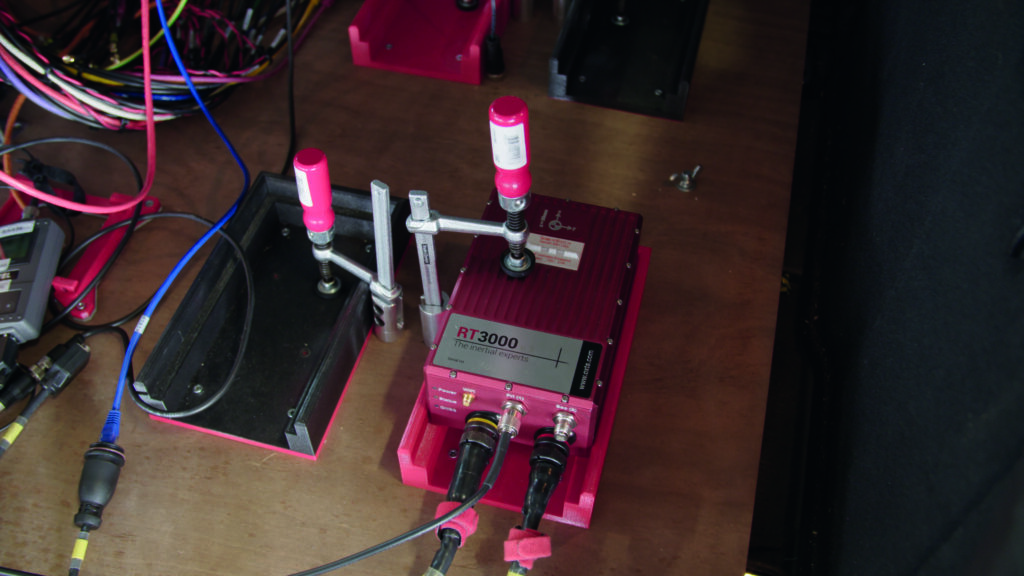 Paris Austin, head of product – new technology at OxTS, explains how lidar can enhance navigation, ahead of the debut of the company’s new lidar odometry solution at the free-to-attend ADAS & Autonomous Vehicle Technology Expo California, September 20 & 21, 2023, Santa Clara, California, where over 80 exhibitors will be displaying the latest in ADAS and automated driving technology.
Paris Austin, head of product – new technology at OxTS, explains how lidar can enhance navigation, ahead of the debut of the company’s new lidar odometry solution at the free-to-attend ADAS & Autonomous Vehicle Technology Expo California, September 20 & 21, 2023, Santa Clara, California, where over 80 exhibitors will be displaying the latest in ADAS and automated driving technology.
Describe your company.
At OxTS we’re passionate about inertial navigation and how we can help our customers with our technology. With over two decades of experience in combining the best of high-precision aiding sources and world-class inertial navigation expertise, OxTS’s products have become the industry standard for automotive testing and are widely used in other industries. Our products provide position, roll, pitch, heading and other measurements of vehicles on land, sea and in the air.
Our world-renowned RT3000 is used throughout the automotive industry for vehicle dynamics testing, validating advanced driver assistance systems (ADAS) and developing automated driving technologies. Position, velocity, acceleration and/or heading updates can be integrated at speed via the OxTS generic aiding interface, to enhance the navigation solution and bridge the gap during prolonged GNSS interruptions. We achieve accuracy in GNSS-denied environments through our sensor fusion expertise, using a variety of aiding sources such as lidar, visual odometry, ultra-wideband and wheel measurements coupled to accelerometer and gyroscope data to accurately position and orient units.
What will you present at the show in California?
We will be showcasing our AV200 INS for autonomous vehicles that require precise and robust localization for their autonomous systems. The AV200 is a state-of-the-art inertial navigation system combining dual GNSS RTK receivers and a compact MEMS inertial measurement unit (IMU) to deliver centimeter-level position and motion data in real time. The onboard navigation engine performing sensor fusion with an extended Kalman filter can combine not only GNSS and IMU data but also other sensor information that may be available, such as ultra-wideband positioning, wheel speed velocity, magnetometer heading and much more.
For outdoor applications, we now offer quad-constellation RTK GNSS support to ensure maximum satellite coverage for precise global positioning. The OxTS gx/ix tight-coupling technology and innovative IMU design maintain that performance even when GNSS is obstructed or blocked completely for short periods.
For indoor applications, alternative aiding sources can be combined with the IMU in place of GNSS to achieve similar levels of performance. Our Pozyx 2GAD indoor positioning system is being used globally for precise indoor positioning for car validation and testing.
We will also be showcasing for the first time our newest product designed for integrators, the OxTS boardset. This product can be directly integrated into your system to provide accurate navigation data.
Why do you think it will be interesting to visitors?
Deployment of autonomous vehicles relies on the ability to navigate anywhere with components that are commercially scalable. The OxTS inertial navigation systems are designed for the path to production, and can easily be integrated into any autonomous vehicle with any pre-existing sensors.
Our recently published GAD SDK helps integrators make the most of their sensor payload by utilizing existing data for the additional benefit of improving navigation performance. This opens up new opportunities and environments of operation.
With this technology, we can also provide an accurate indoor positioning solution that enables users to test and validate their vehicles in GNSS-denied environments like parking lots and tunnels. It can also enable autonomous vehicles to navigate in difficult GNSS-denied environments.
Our boardset is suited for autonomous vehicle development, with the INS being unhoused, allowing it to be integrated into payloads seamlessly at a lower cost and lighter weight. Our solutions fit within the path to production with scalable pricing for fleet development.
How can lidar enhance navigation data for ADAS and autonomous driving?
OxTS’s new lidar odometry solution uses an IMU-GNSS tightly coupled INS to deliver innovative, high-precision and high-reliability navigation data in any environment. OxTS LIO significantly reduces drift and improves performance in GNSS-denied or GNSS-harsh environments such as built-up cities, which are key environments for autonomous vehicles and ADAS testing.
Towns and cities are excellent for the algorithms of OxTS LIO to produce consistent and high-accuracy updates even with the interference of moving cars and pedestrians. By comparing frames of the environment, the difference in its relative position and orientation can be determined if the same object is viewed in both frames. Then, using the timing difference between frames, linear and angular velocities can be calculated. Finally, covariance values must also be accurately calculated. This measure of the uncertainty of the velocity calculation can be estimated by considering the spread of lidar points on an identified object. Our LIO technology does this, combining the lidar data with our navigation engine to deliver localization with less drift and higher accuracy.
Using OxTS LIO with a GNSS-aided INS enables us to get the maximum utility out of both measurement sources. The GNSS allows navigation anywhere in the open world in global frame coordinates that can be compared with any other survey or navigation application. But the LIO adds the ability to transition through poor or GNSS-denied environments. The biggest performance increase can be easily seen in built-up urban environments or in trips with transitions through GNSS-denied or indoor locations.
Ground-truthing applications such as using an INS as a reference unit in autonomous driving testing can significantly benefit from the use of lidar odometry. LIO opens up more real-world driving scenarios to be accurately tested, whether it is maintaining lane-level trajectory in a built-up city or visiting a multilevel parking facility for a prolonged time.
Visit OxTS on booth 402 at ADAS & Autonomous Vehicle Technology Expo California – register here for your FREE exhibitor fast-track entry code. Read the official magazine show preview, here.



